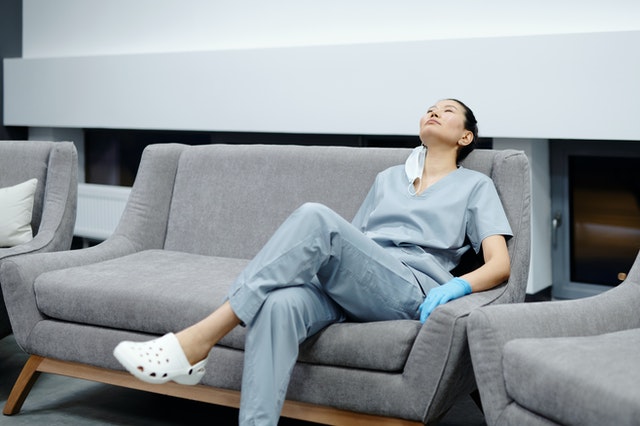The Nursing Station
I remember when I had made the decision to move from working in Bone Marrow Transplant to Aged Care. I was a young newly appointed Clinical Nurse and was told by my peers and hospital administrators I would be wasting my time and career. ‘Afterall, nursing in a care home is where you go to retire and enjoy the easy life.’ I was infuriated. The sad thing was, this was not said in jest, it was of deep concern that I had thrown my career away. Sadly, this stigma continues to be evident today. How farther from the truth this misguided notion is?
What is the art and heart of nursing?
Older persons’ care is one of the most complex health specialties. Don’t be thinking you are sat behind a desk all day. If you are, you shouldn’t be! Firstly, the art and heart of nursing is not constrained by a desk. Nursing is so much more than documentation and copious notes written within a nursing station. So, what is the art of nursing?
The art of nursing is about connection. Sometimes a piece of art speaks to you; it touches your heart. That’s
how I feel about those opportunities in nursing. Those patients and those experiences touch me in
a way that never goes away. And I got to touch those people.” Artful nursing uncovers the
‘honoring’ part of nursing; the part where the nurse enters the ultimate personal space of a
Person “ (Henry., 2018)
Attitudes, Feelings and Emotions
The whole point of nursing…. People. Nursing assessment and intervention can’t be achieved without people, meaningful connection, compassion, and engagement. It’s about entering different realities of the people we care for, engaging our heart and soul to nurture the spirit, soul and physical needs of the moment. Caring from the heart provides illumination and feelings of wellness for both nurses and the people we care for (Hemberg., 2020).
(Huber., 2019) undertook a qualitative descriptive study examining the attitudes amongst nurses who supported engagement with direct patient care versus nurse leaders and managers. Qualitatively, both cohorts experienced levels of engagement and quality interactions. Interestingly, these were only considered engaging and supporting attitudes of achievement, impact and connection when both cohorts of nurses engaged with people and were not ‘behind a desk’.
(Norouzinia. & Aghabarari., 2016) state to go beyond perceptions of engagement, attitude and what good care should look, sound, and feel like, were the fact that people who are being cared for and the people providing the care have a closer and more meaningful relationship when connections and vulnerabilities with each other are experienced.
So, what does engagement beyond the desk look, sound and feel like?
- Encountering each other as human beings
- Being in the moment
- Bearing the responsibility for the person caring and being cared for
- Being in loving communion
Nursing is about sharing experience, emotions, and feelings with each other and providing support to ensure wellbeing for people is met and maintained in sickness and in health.
‘I think one’s feelings waste themselves in words, they ought all to be distilled into actions and into actions which bring results’
(Nightingale., Notes on Nursing: what it is and what it is not, 1860)

RN (Australia)
Managing Director MCM
References
Hemberg., J. &.-G. (2020). Caring form the heart as belonging – The basis for mediating compassion. Nursing Open, 660 – 668 .
Henry., D. (2018). Rediscovering the art of nursing for nursing practice Paper 3470. Tenmessee: Electronic Thesis and Dissertations East Tennessee Statue University.
Huber., K. (2019). Perceptions of nurse engagement among bedside nurses and nurse leaders: A qualitative descriptive study. Columbia: Columbia University.
Nightingale., F. (1860). Notes on Nursing: what it is and what it is not. London: Harrison.
Norouzinia., R., & Aghabarari., M. S. (2016). Communication barriers percieved by nurses and patients. Global Journal of Helath Science, 65 – 74.

